Final render with Photoshop
Iterations
The first image is my initial idea for my chess pieces.
The second and third images are my slip joints and construction design.
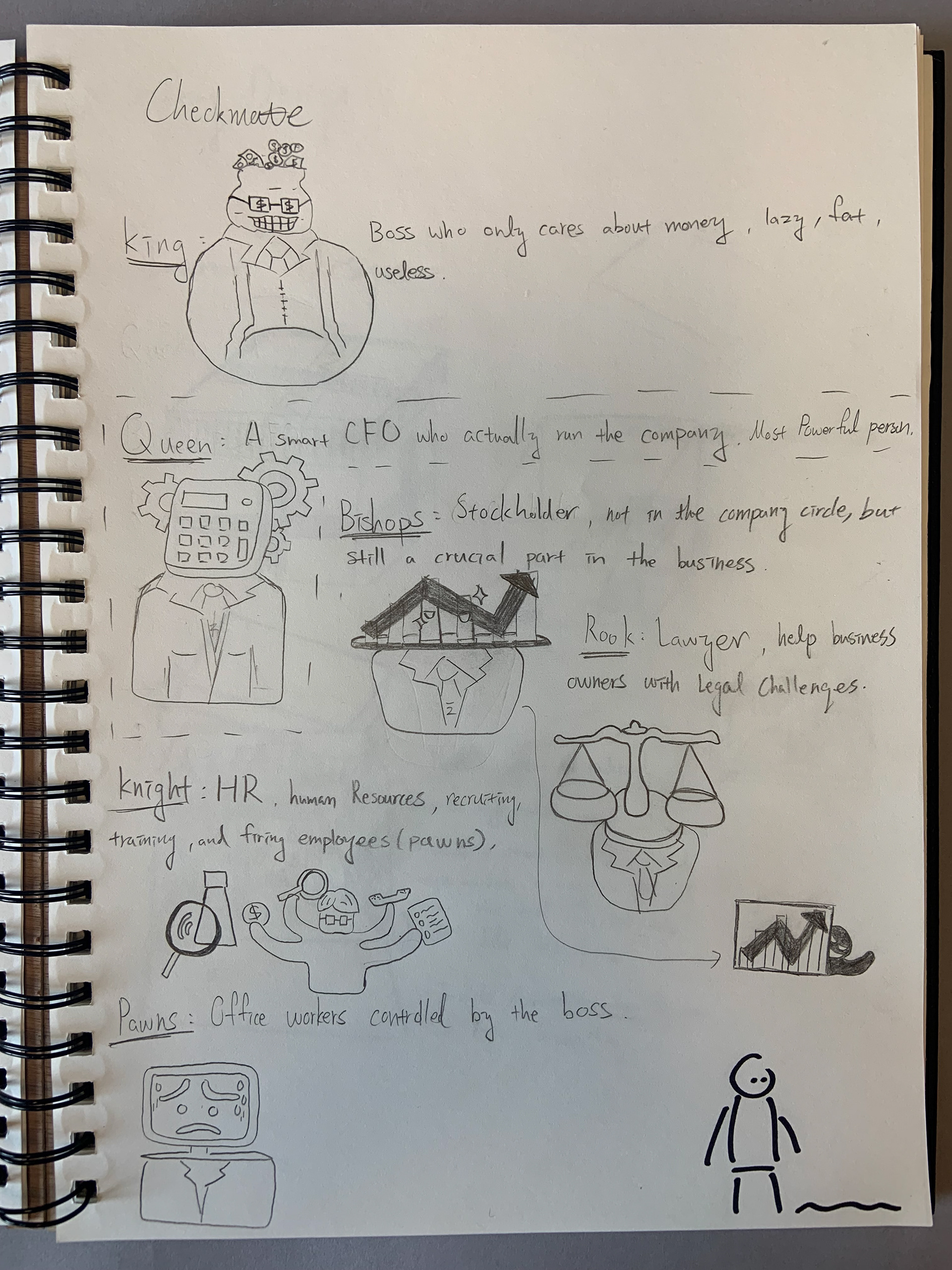

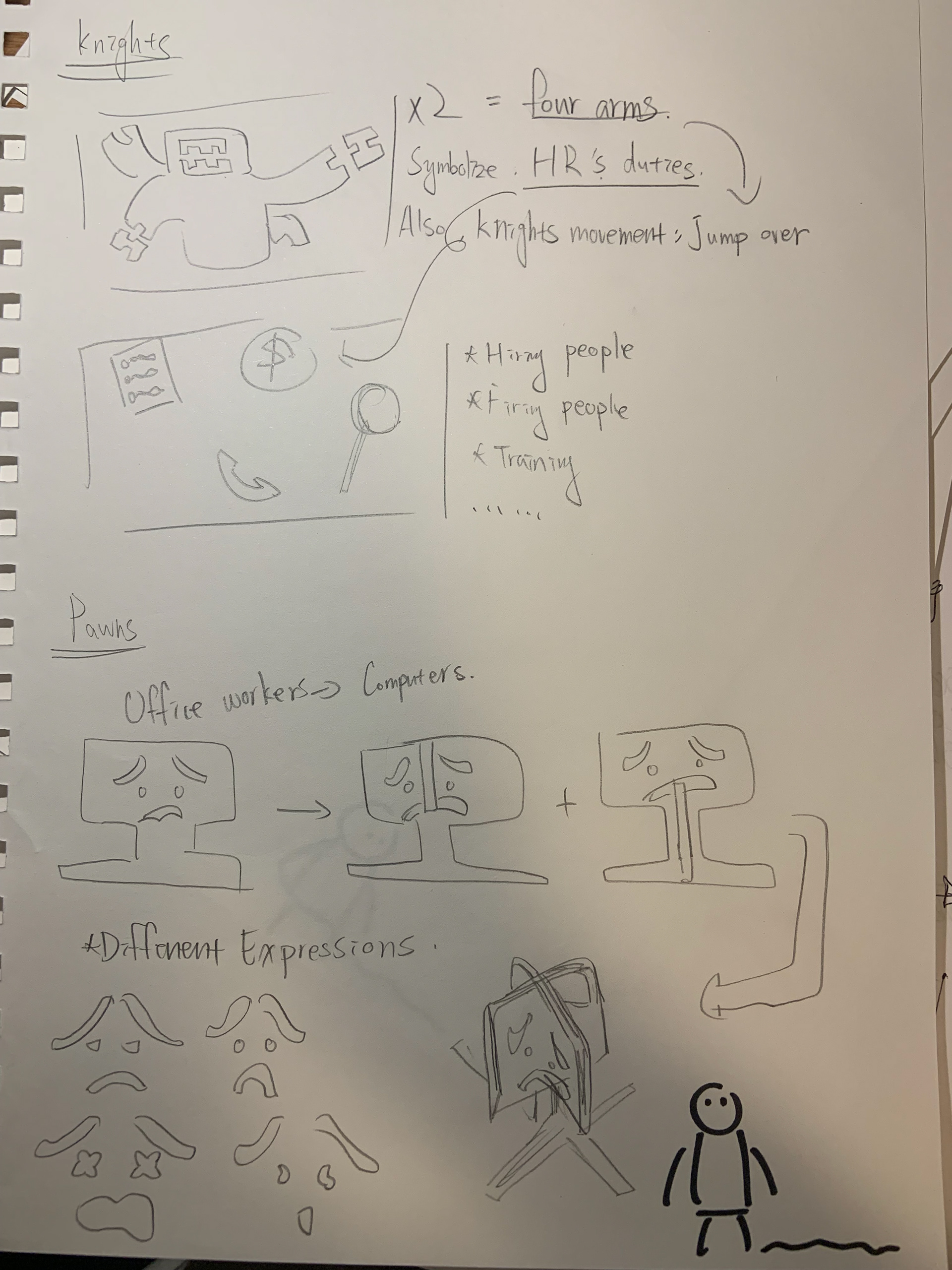
I tried to use the laser cutter to cut the figure's outline for me; however, it turned out to be too fragile and easy to break.
concept statement
My partner and I have decided to make a “Monster” theme for the chess checkmate assignment. While his pieces are about the fictional monsters in the different iconic movies, my pieces are about the monstrous hierarchy system in modern business.
According to my research, the original chess pieces also consisted of a hierarchical ranking system. Still, the time background was in the medieval era. This is why I came up with the idea of alluding to the hierarchical system of the medieval period in modern-day society. From the king to the pawns and the boss to the office workers, there were a lot of similarities and interesting comparisons when I did my research.
In my pieces, I planned to use plywood as the primary material for the slip joint technique, and I also planned to use fake money to embellish my pieces. Since my theme is about the hierarchy system in business, I think using fake money as a visual element would be meaningful and exciting. In my pieces, the king is the boss, the queen is the CFO, the bishop is the stockholder, the knights are the HRs, the rooks are the lawyers, and the pawns are the office workers. As I was doing the hierarchy system, I made the base with the suit pattern for the pieces other than the pawns, and the pawns, which are the office workers, have the blank bases. This design also represents that only higher-power people will get good treatment.
Chess Pieces Stories and Images
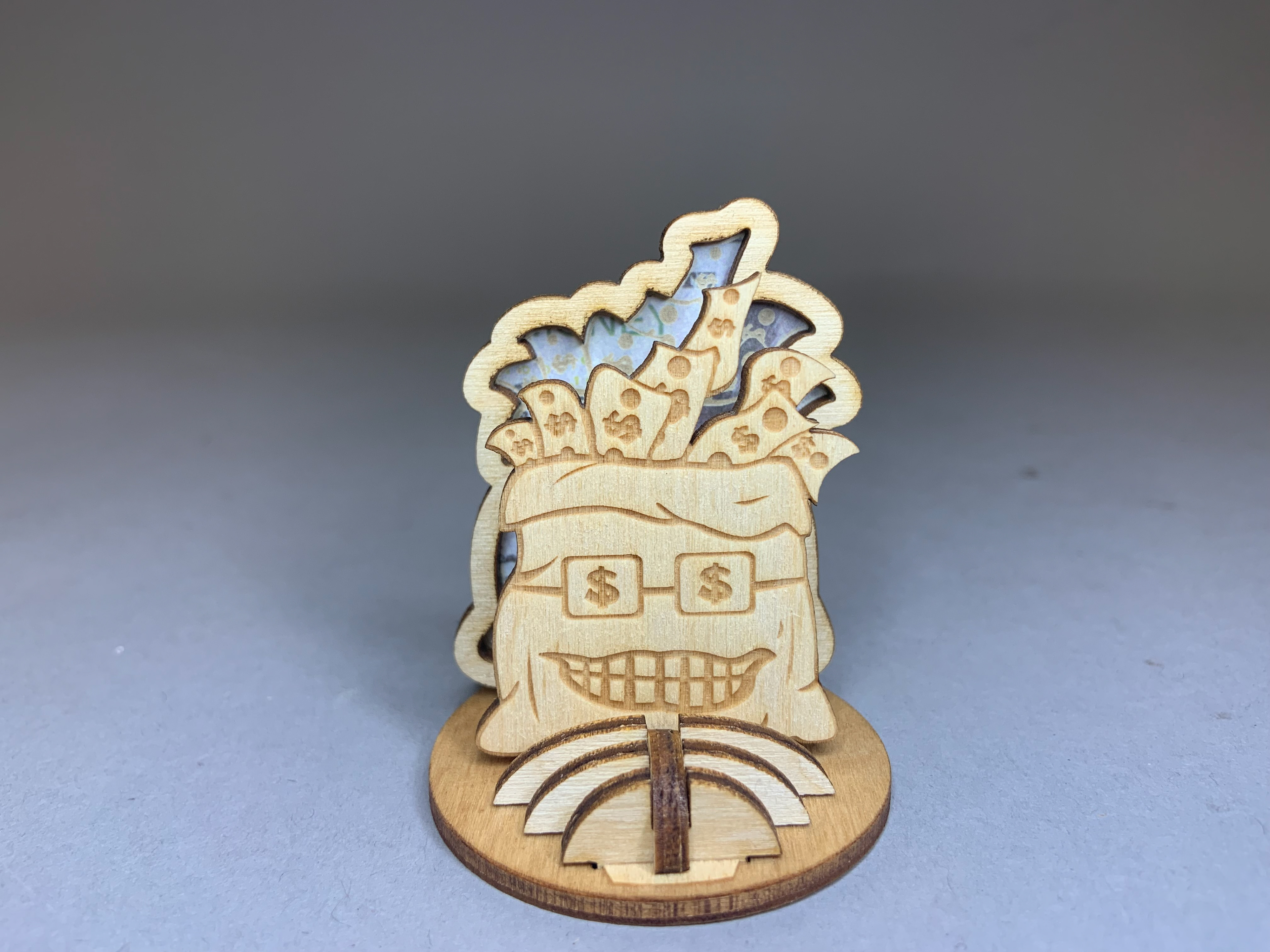
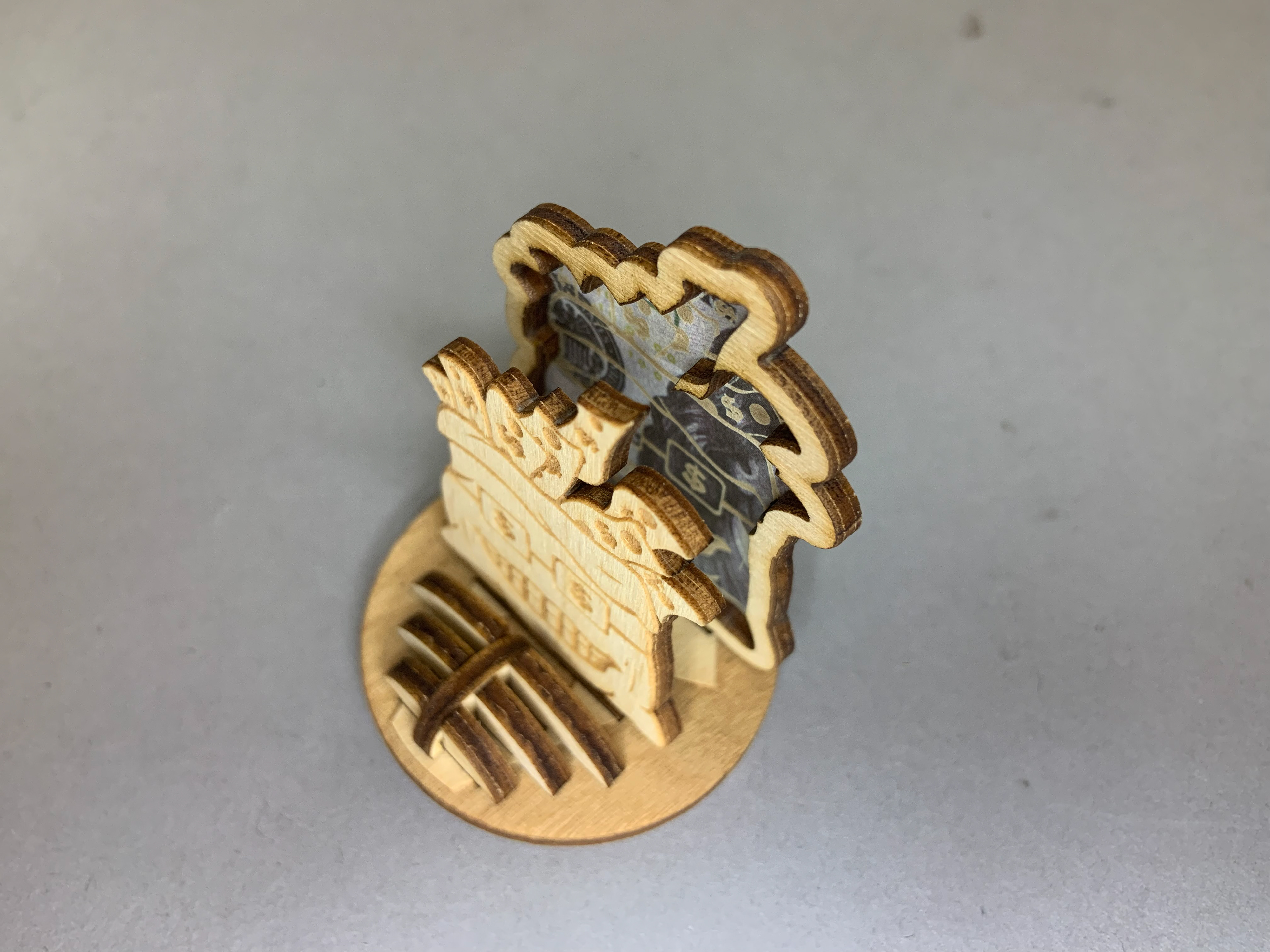
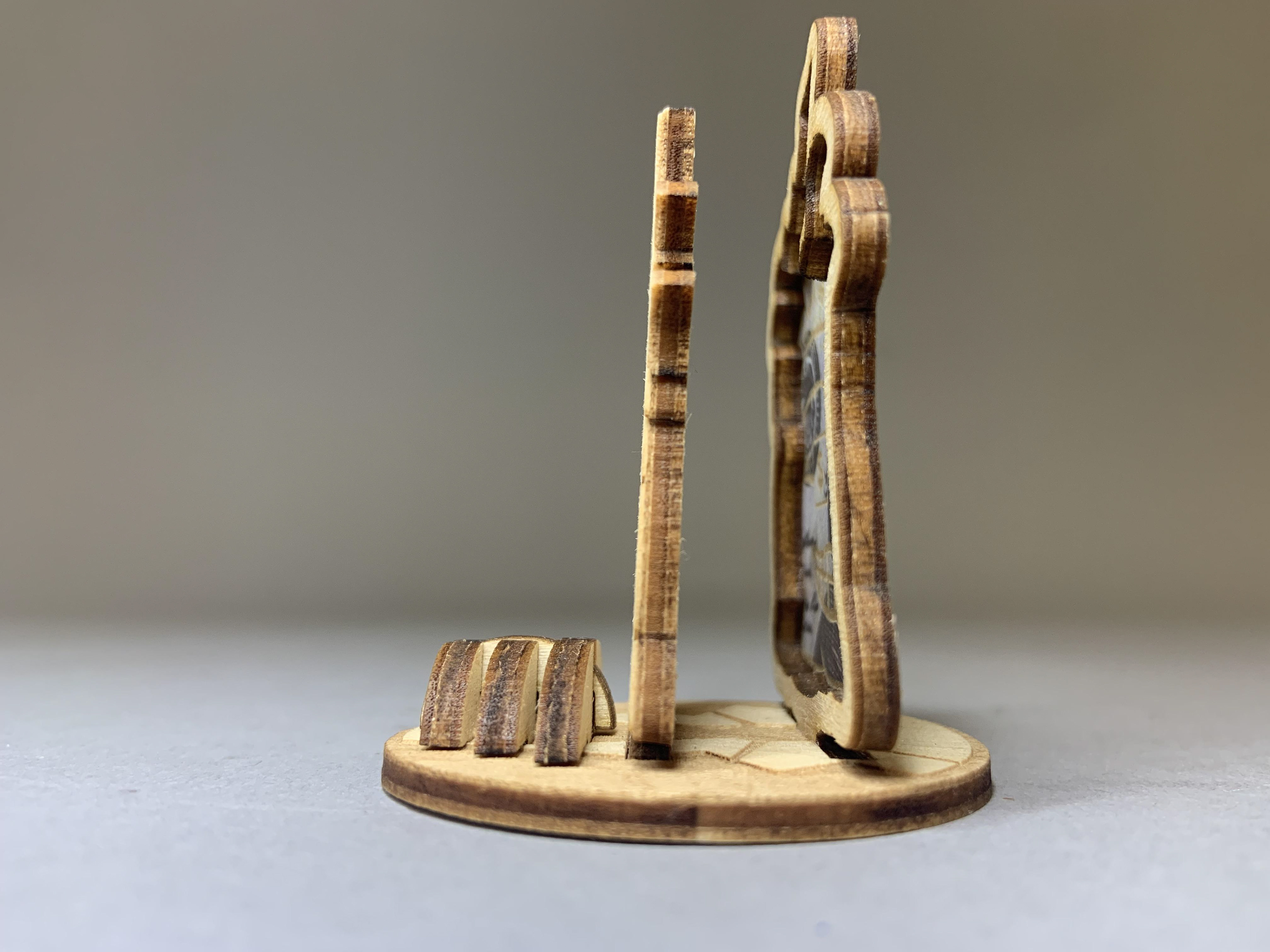
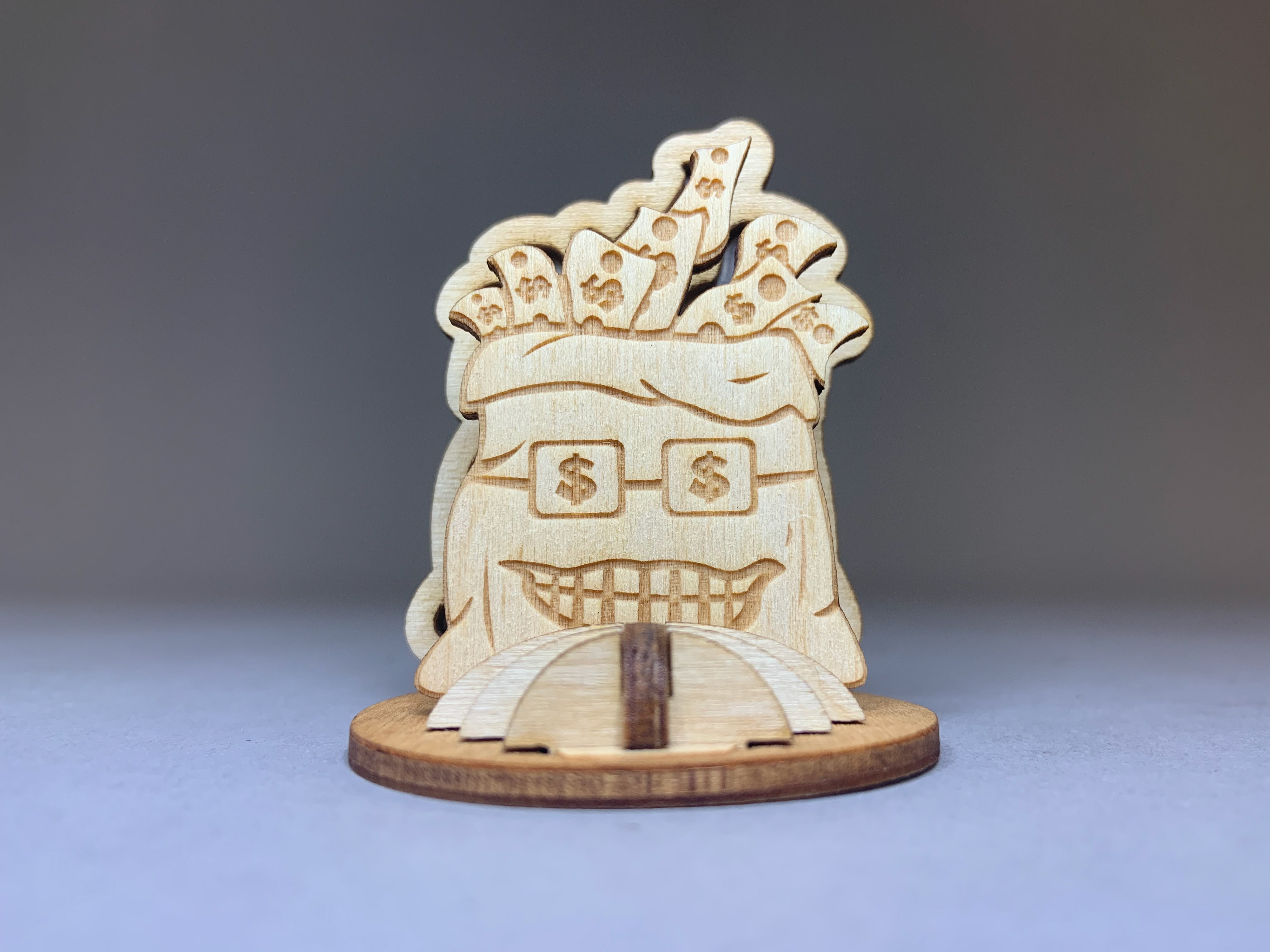
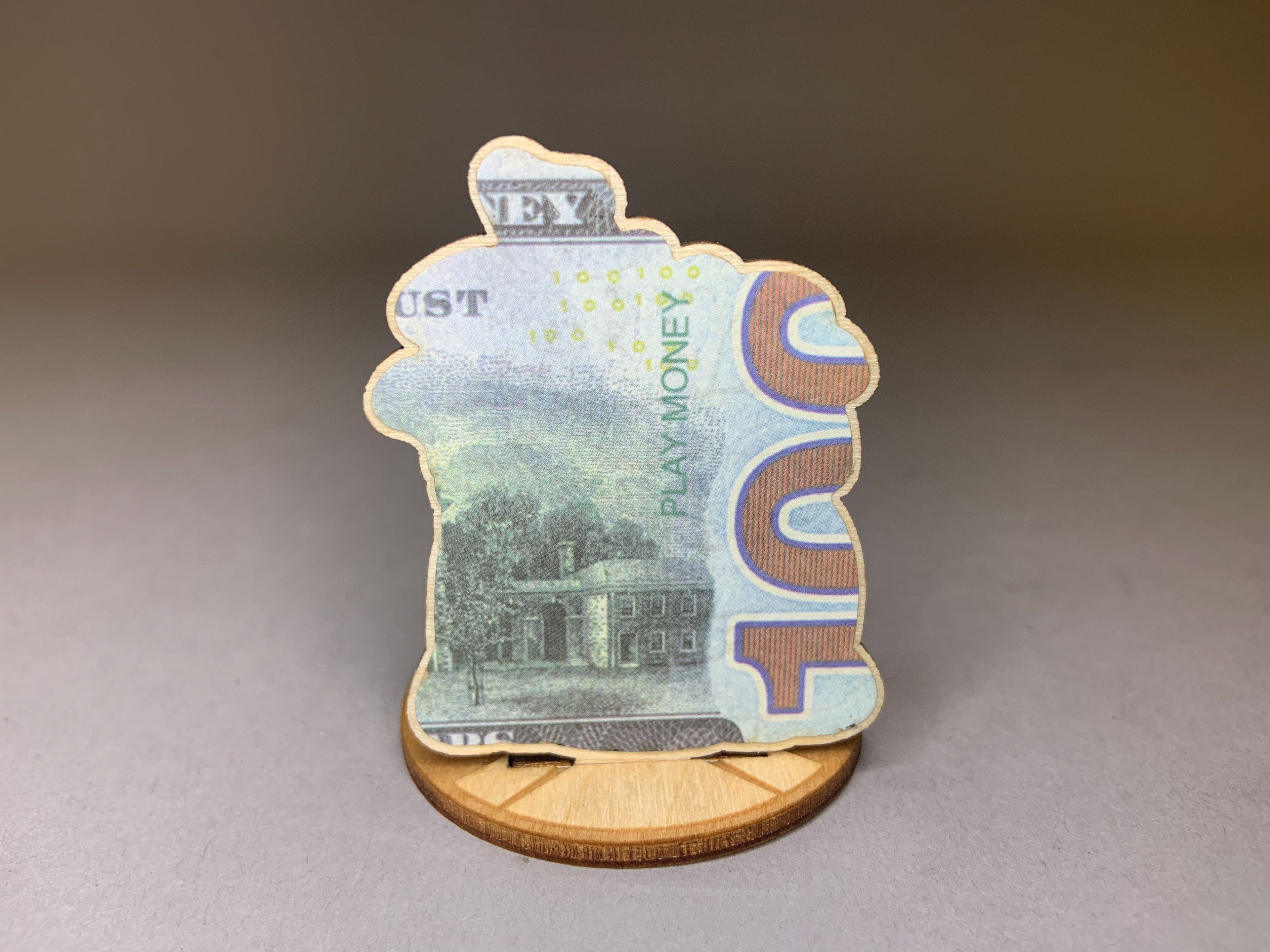
In my chess pieces, the king is the greedy boss who cares about money. I use the slip joint technique to make him a stomach for his lazy and fat characteristics, referring to the original chess allusion. The king is one of the most useless chess pieces that relies on others' protection. I designed the figure of the king to be a money bag with a greedy smile and a cash icon in his eyes. I made two layers to create the depth of this piece. The front layer has a wooden texture, and the back layer has a wooden outline and a fake money figure. The visual sense consists of great depth and the use of negative space.
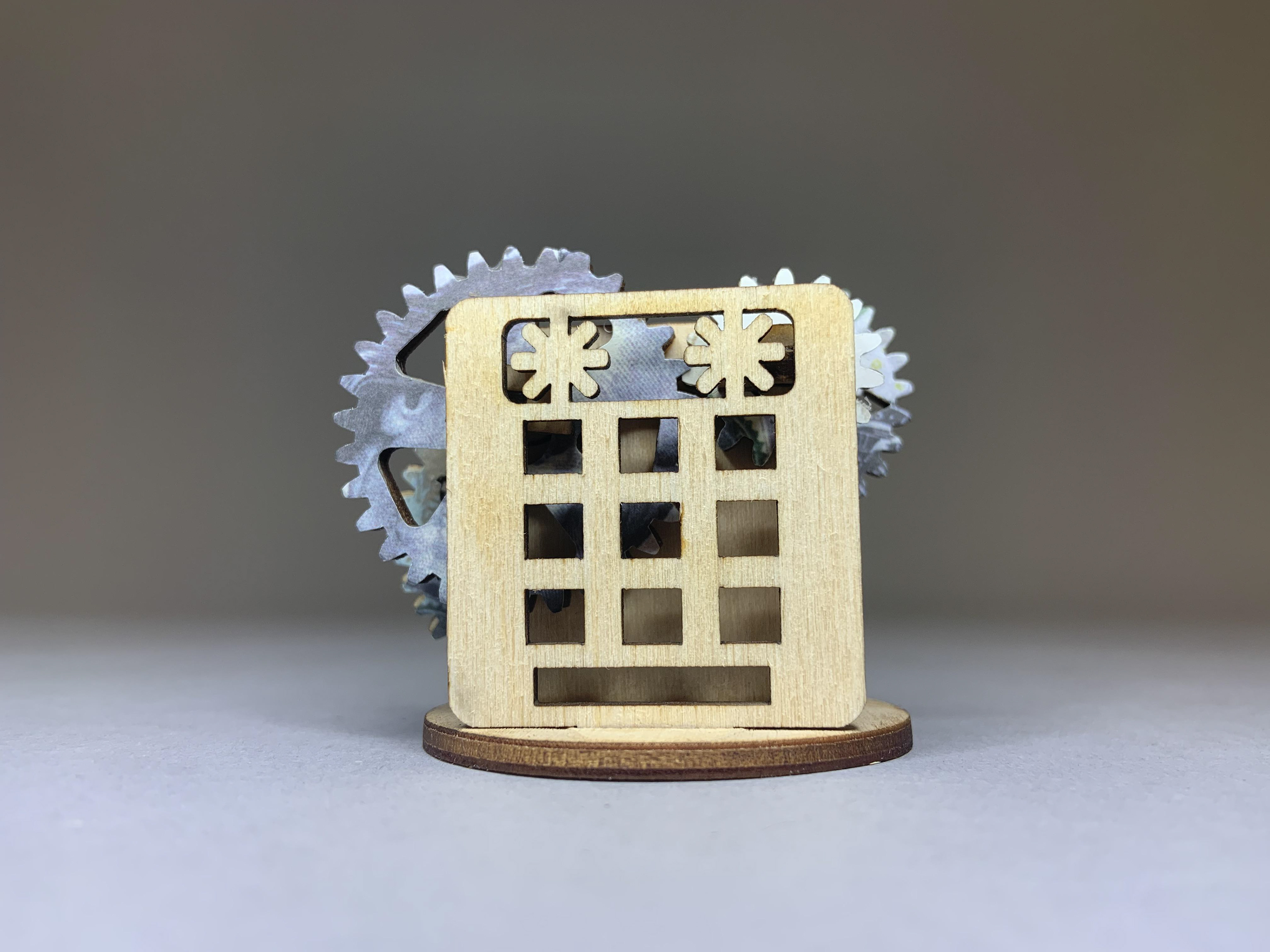
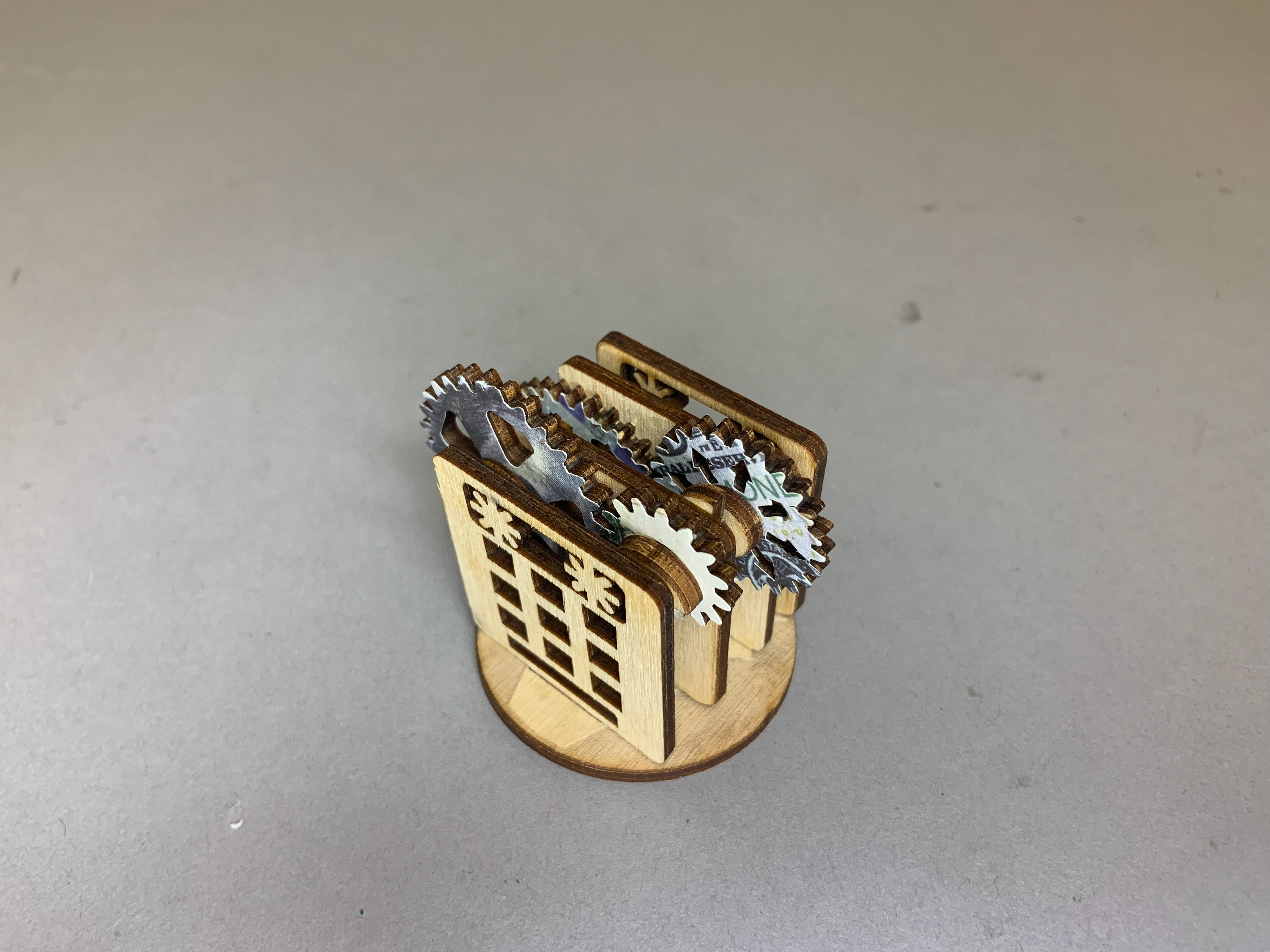
The queen in my chess pieces is an intelligent CFO who runs the company. She is the most powerful piece in the company and the chess game. I designed her figure to be a calculator with four gears, symbolizing her intelligence and strength. The design and measurement of the gears are complex since I only have minimal space on the base. I printed fake money on the gears to create a sense of “making money” since the gears are rotatable. Her eyes and the gears also represent the queen's movement in chess, with vertical, horizontal, and diagonal infinite steps. The unique part of this piece is that it is interactive. Viewers can rotate the gears, and they'll spin very smoothly.
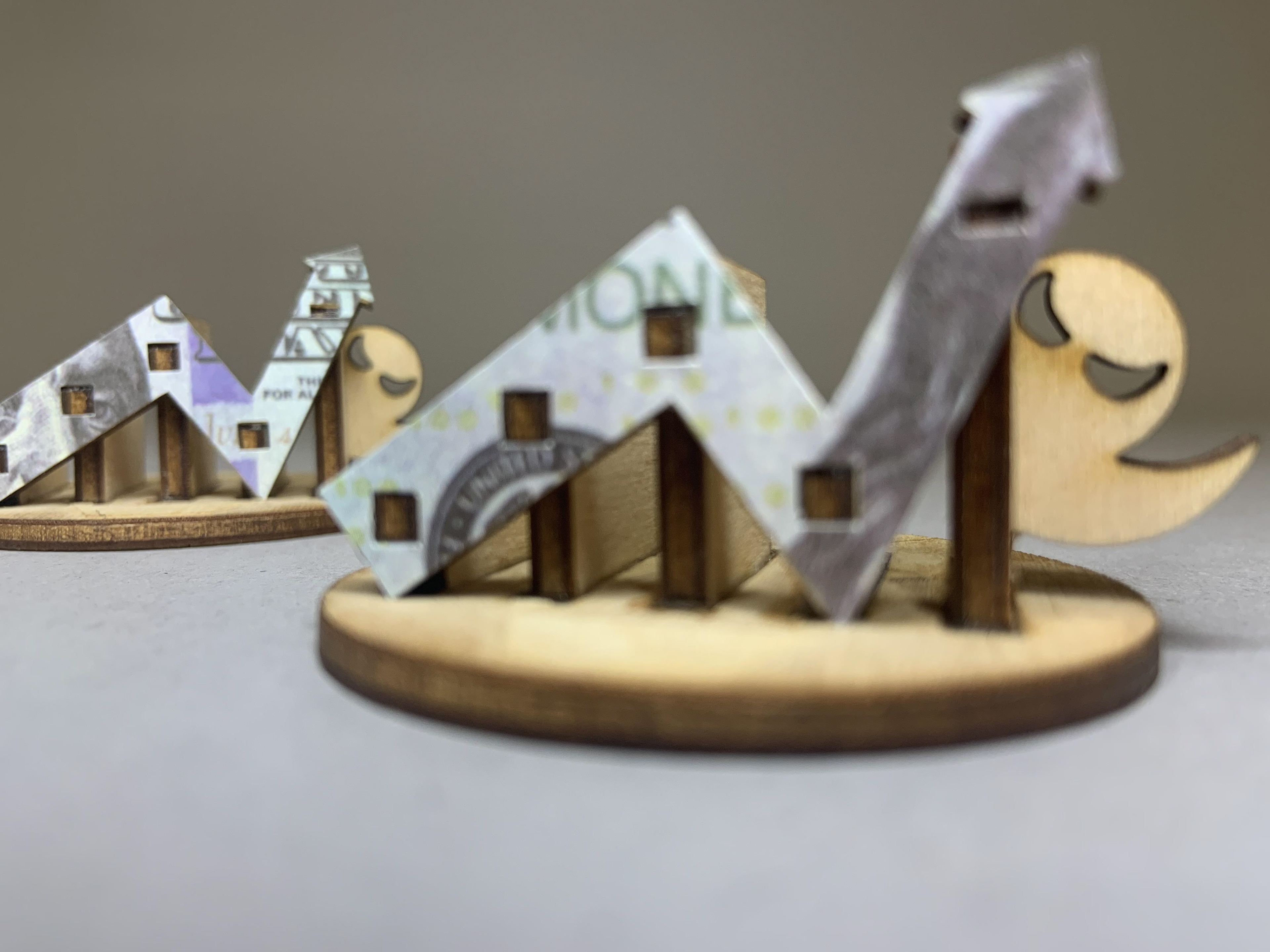

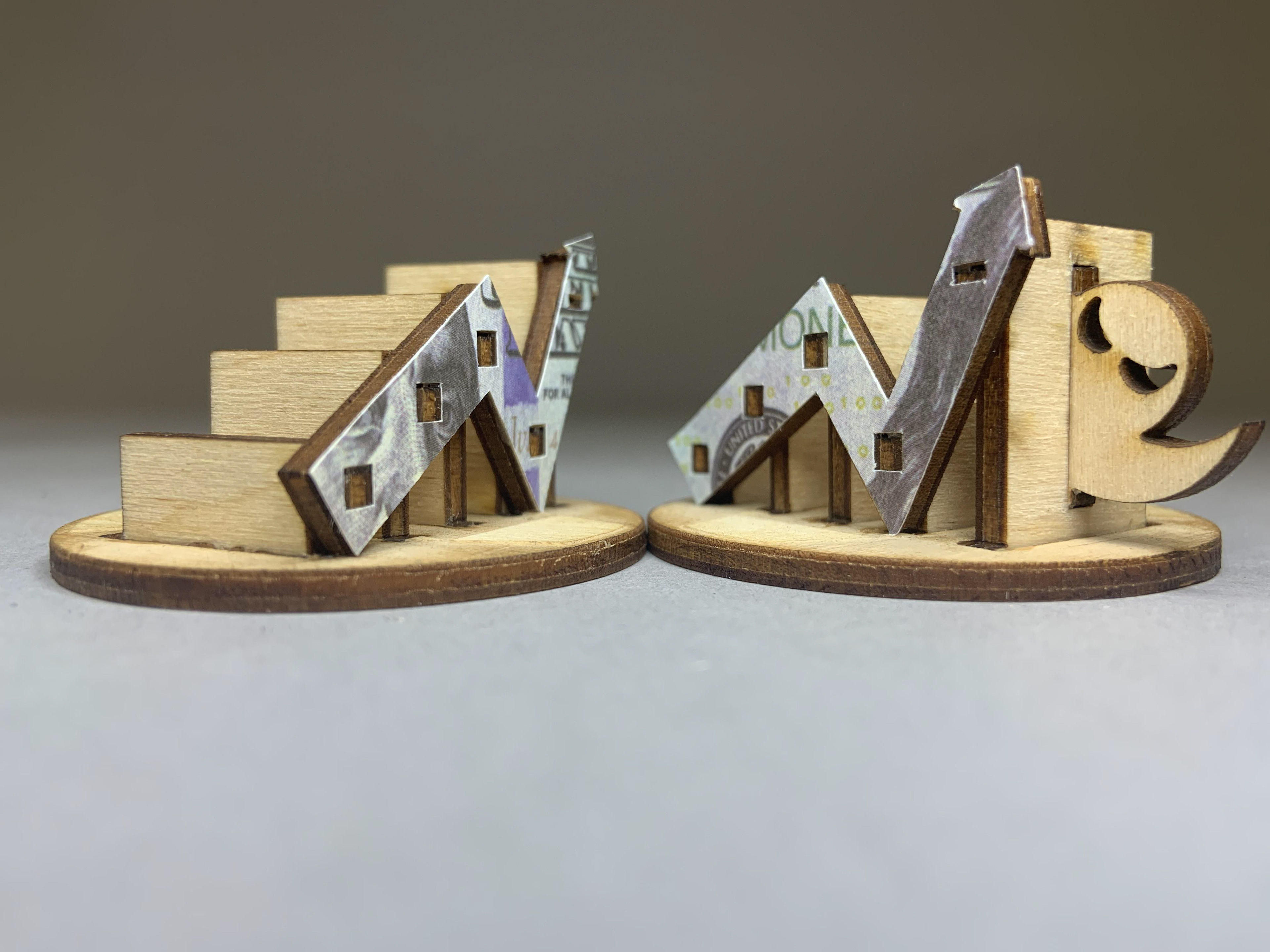
I decided to make the bishops a stockholders' figure. In the medieval era, bishops were not part of the royal circle but were still essential to that hierarchical system. I found that stockholders share this same trait as the bishops; they are not part of them but are still crucial to the system. I illustrated a person sticking their head out of the stock chart. This is because stockholders are usually more like "behind the scenes" people. The diagonal arrow on the stock chart represents the bishops' diagonal movement in the chess game. As the stock charts went up and down, viewers could sense the movement and rhythm of the pieces.
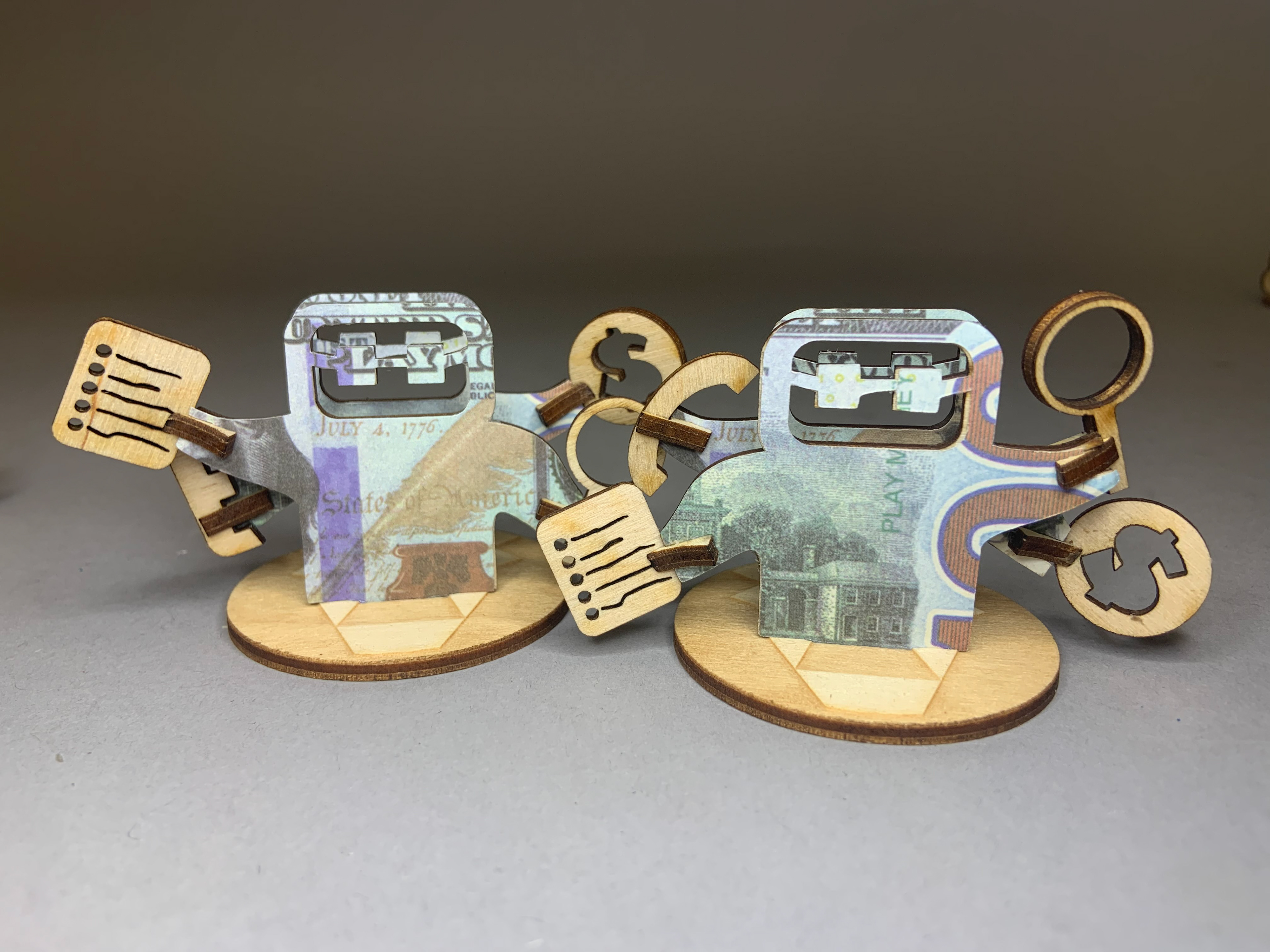

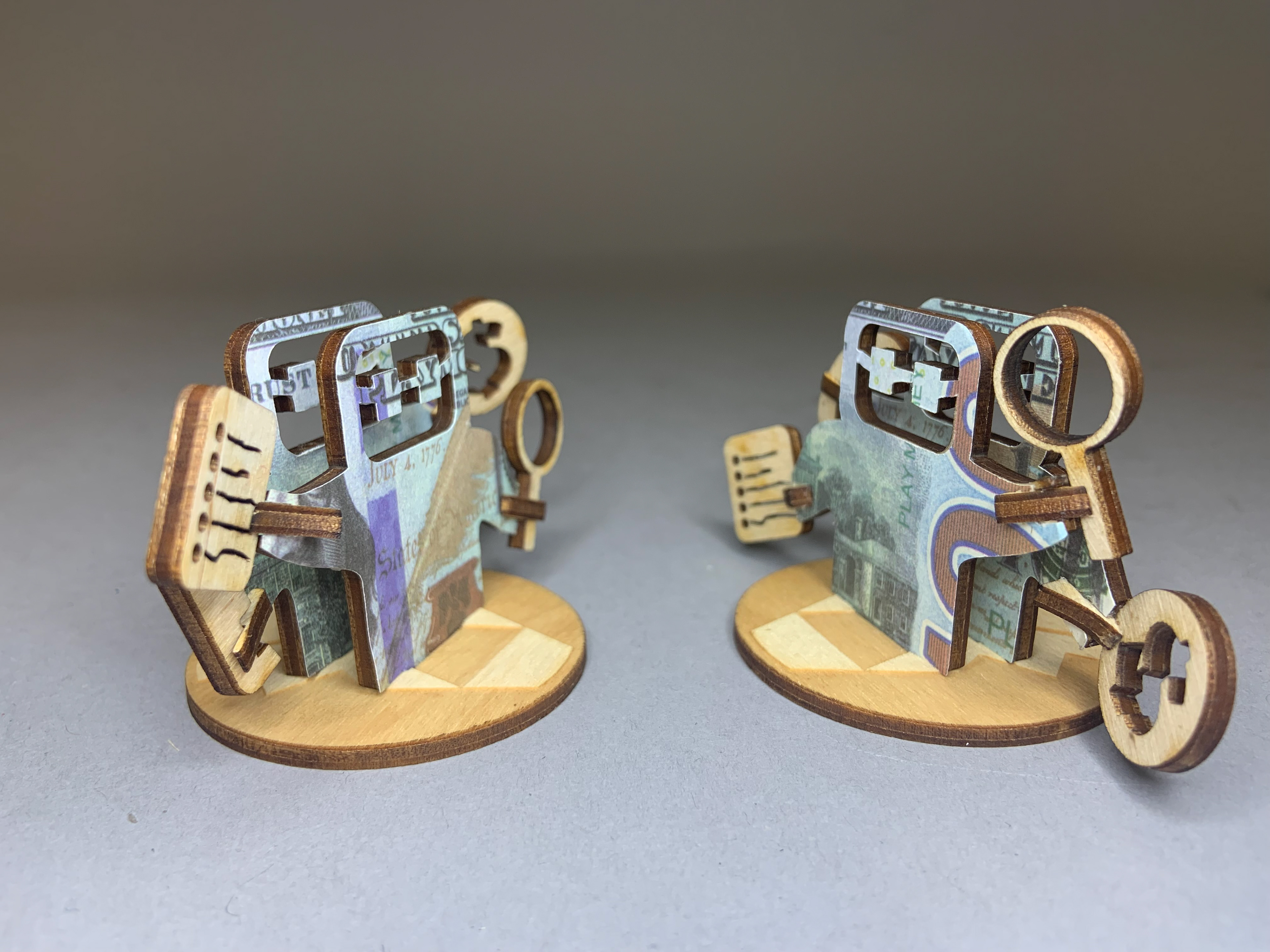
The knights in my chess pieces are the business's HR (human resources). Since HRs have a lot of duties, including recruiting, onboarding, training, and firing employees, I made my pieces a four-arms man to symbolize that they have an essential and complex role. The four items in their hands are the note sheets, a magnifier, a telephone, and a coin. Each of them represents some specific role of HR. The four arms allude to reaching further than others, which refers to the knights' movement in the chess game, who can jump over other pieces. The double-layer figure of the chess pieces creates a sense of depth. The slight turning angle of the hands also produces a sense of movement.
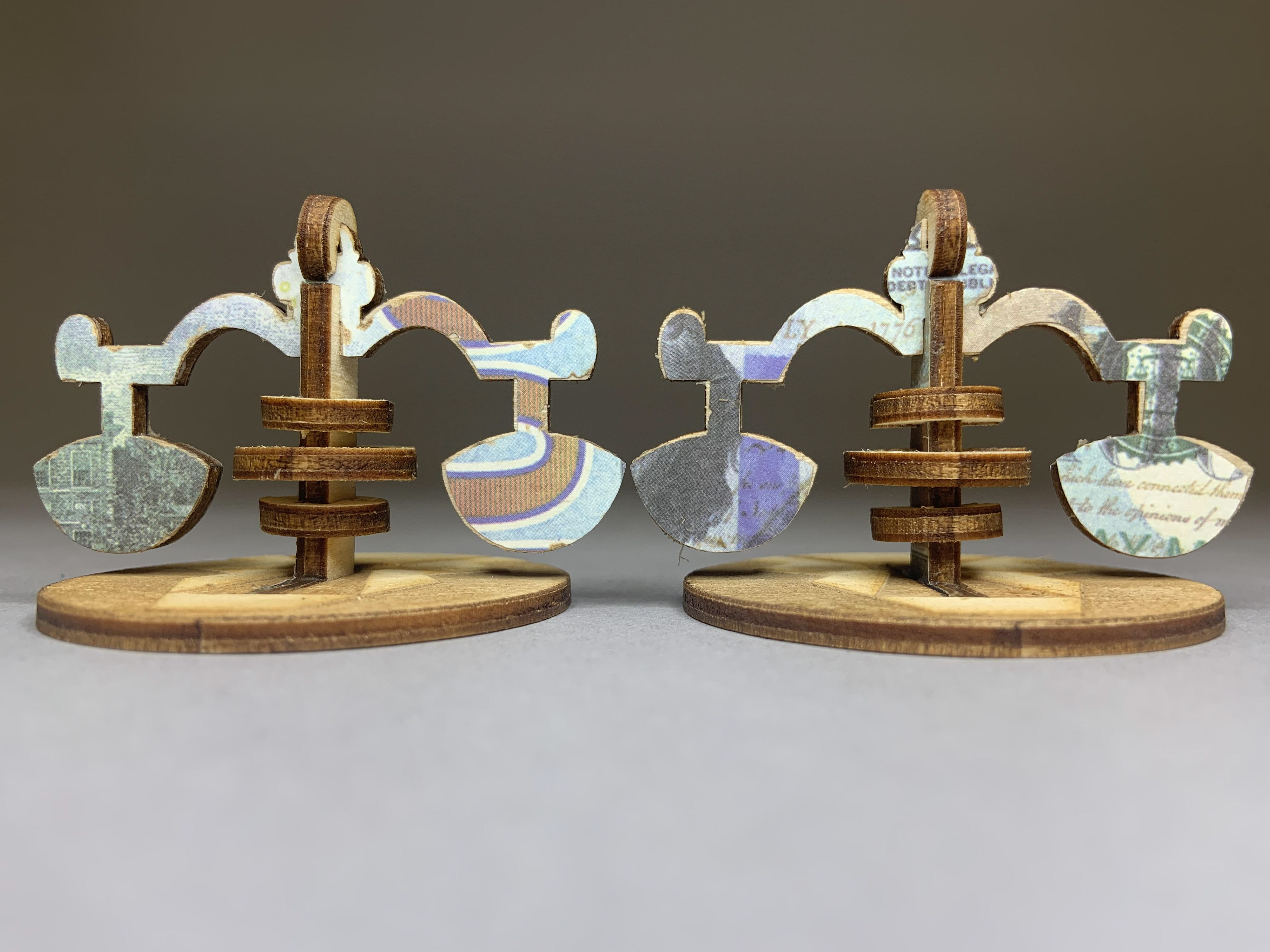
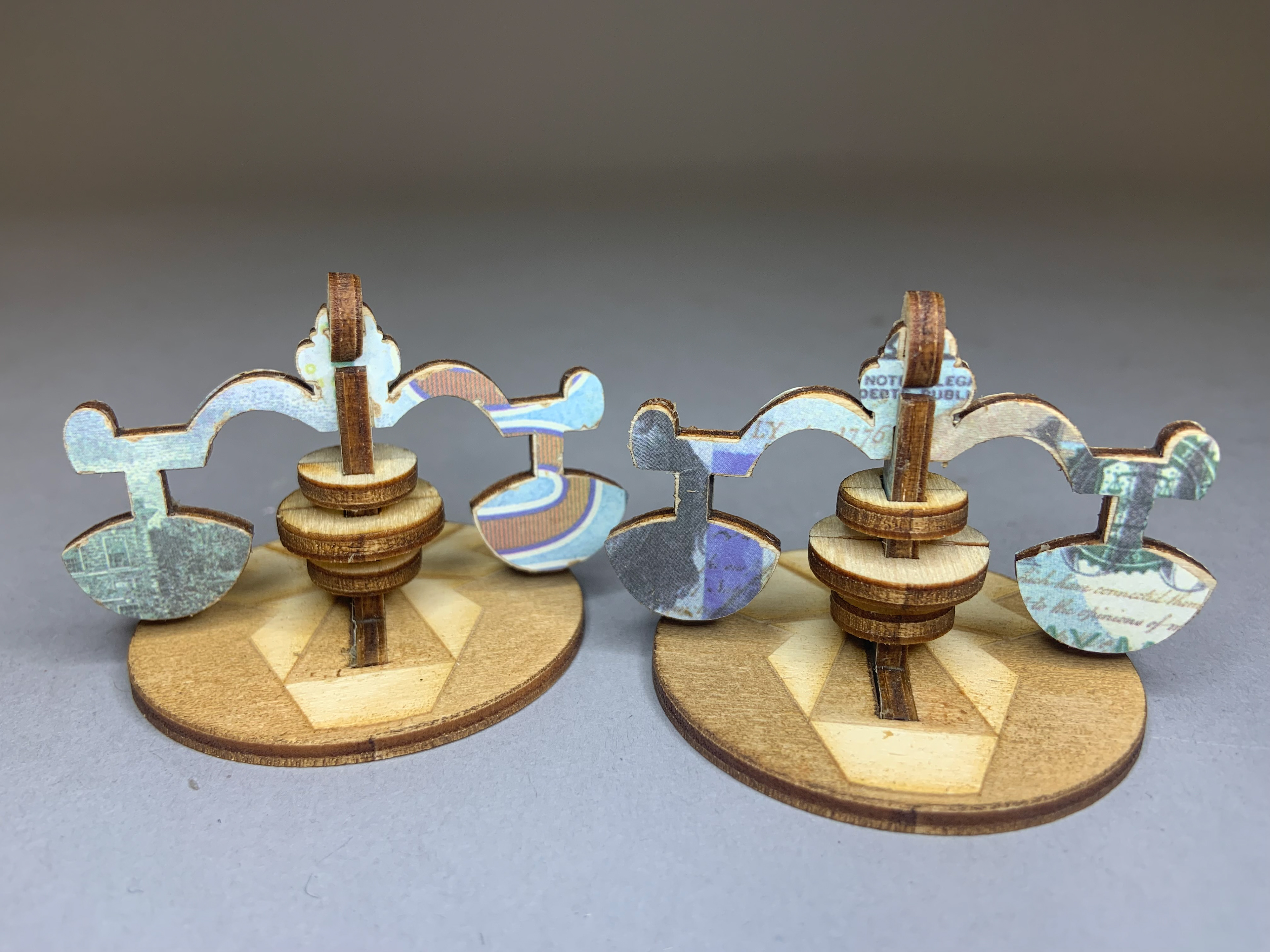
I made the rooks the lawyers in the company. Since the rooks are the sturdy defenders in the chess game, the lawyers in the company will help the business owner deal with the legal challenges and issues. I made a pair of scales to depict the lawyer figure. The balance scales also create a sense of strength and stability. The visual sense of these rook pieces is very balanced. The slip joint technique for the body of the scales creates a smooth rhythm and movement.
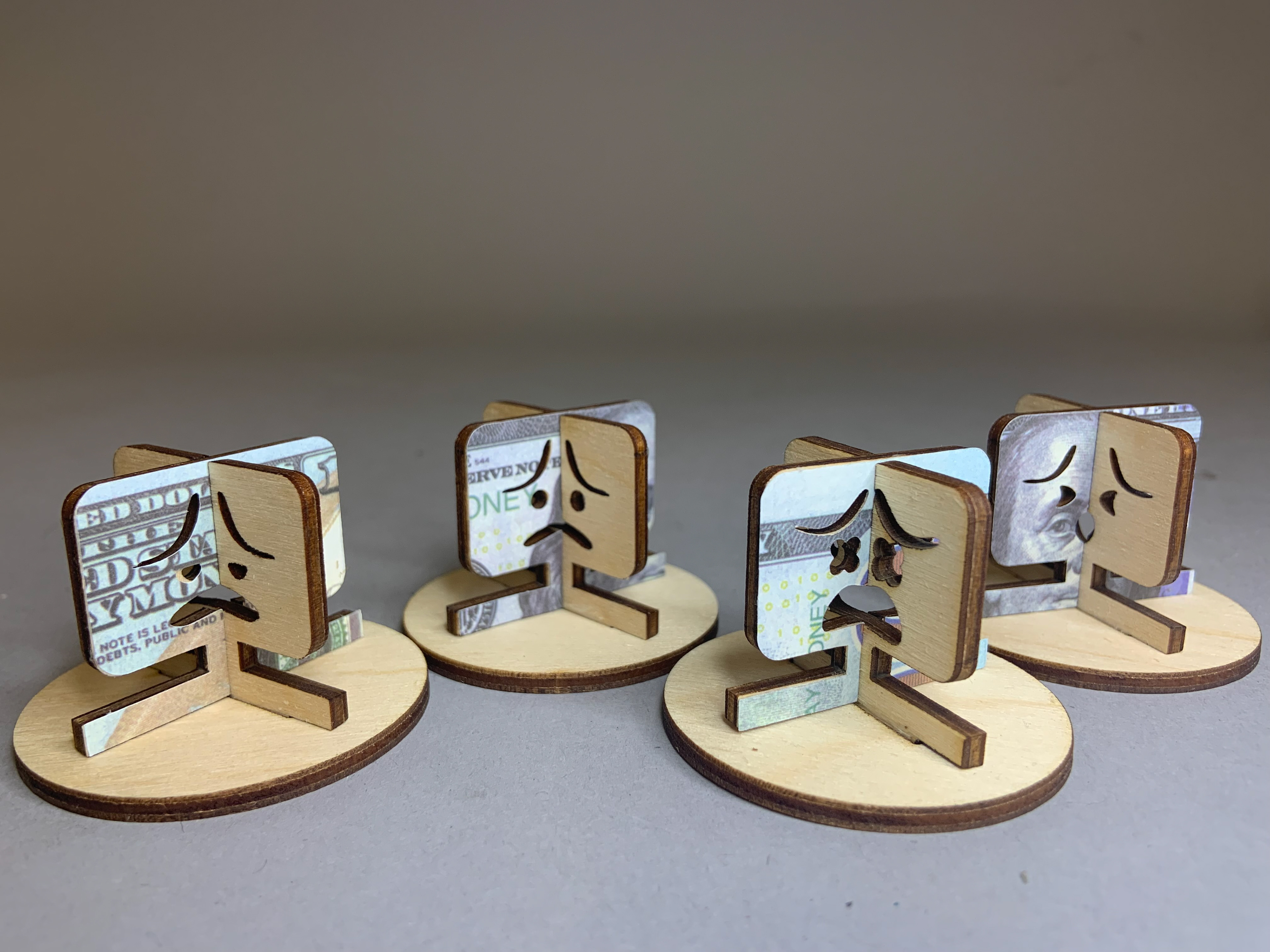
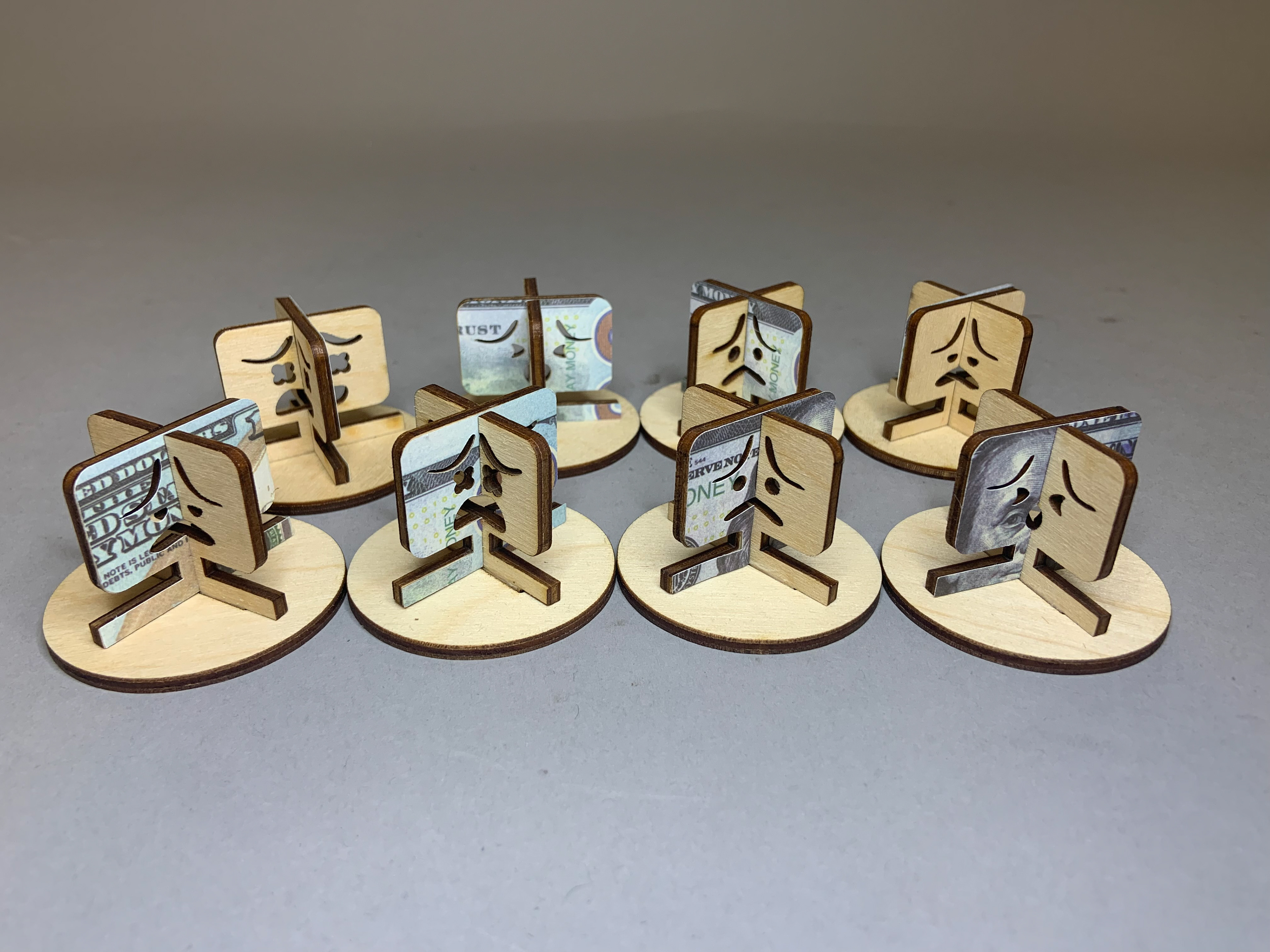
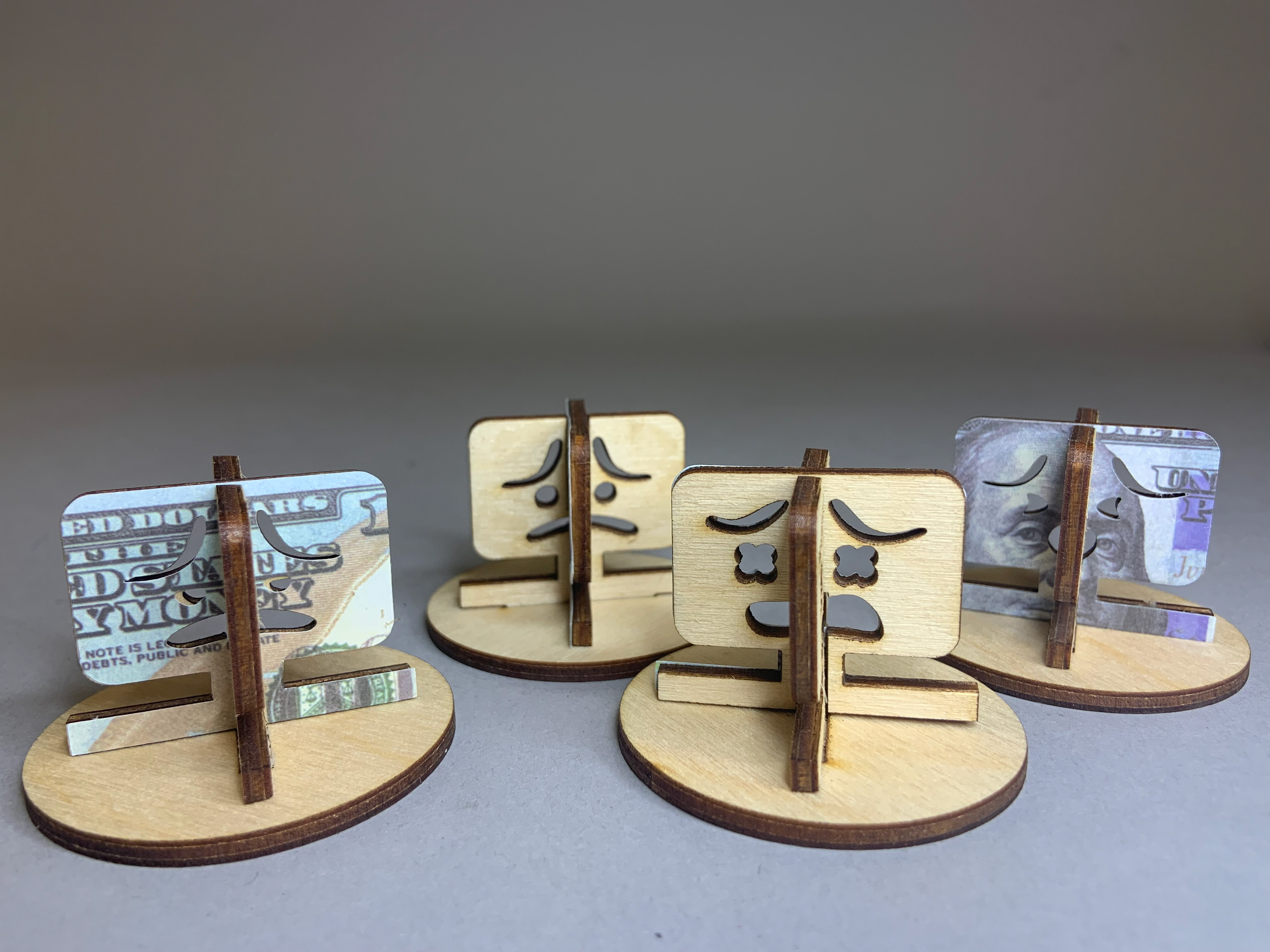
The pawns for my chess pieces are the office workers controlled by the boss. I made them a desktop figure to represent that they're all sitting in front of the computer and working painfully. I also gave them different expressions to emphasize the different kinds of unhappiness. Some are resigned and have no choices; some are overwhelmed, and some are just disappointed. I used the slip joint technique to create a unique visual sense. The crisscrossing figure with half fake money and half wooden texture makes them look at it from different angles to get diverse effects.





